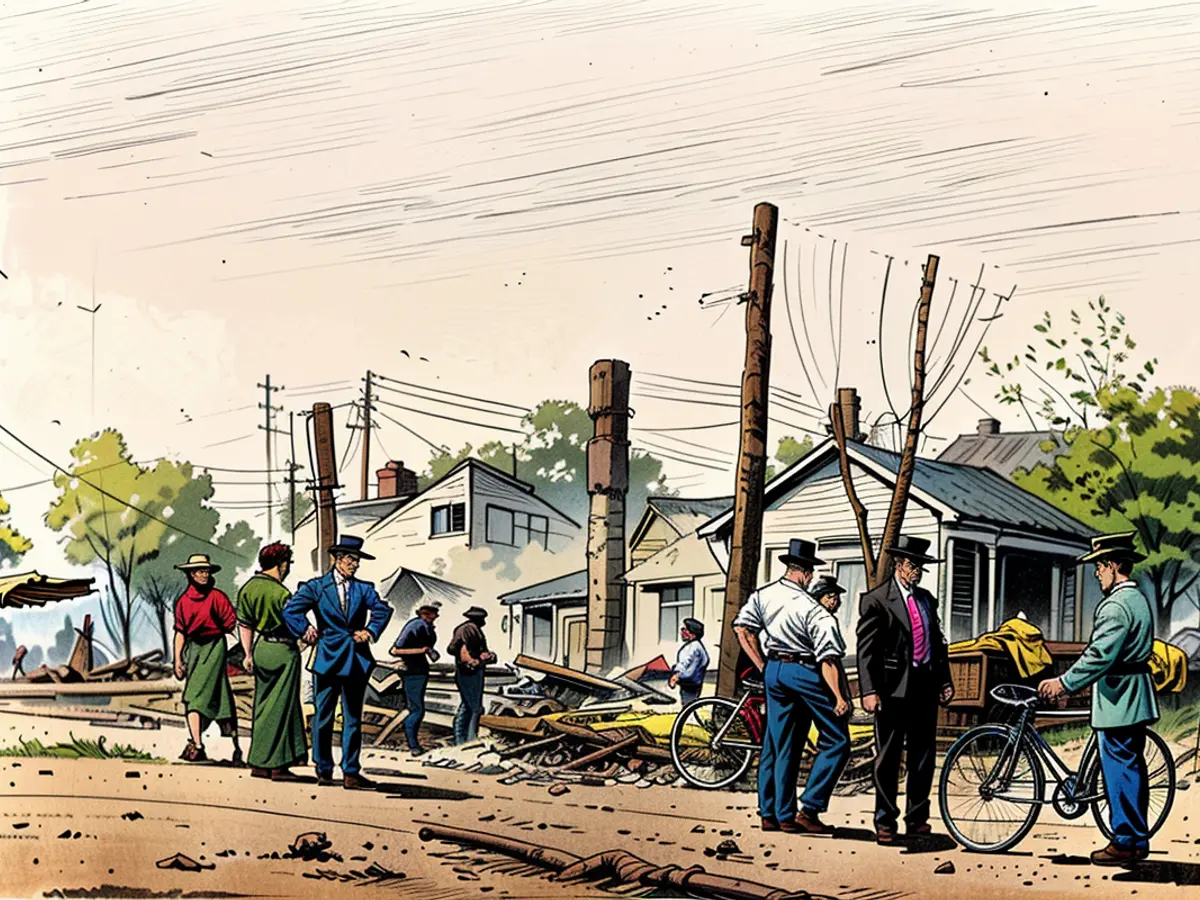Biden to designate the site of 1908 race riot a national monument
For two nights in August 1908, a White mob laid siege to Springfield, indiscriminately looting, burning and destroying Black-owned homes and businesses, in a race riot that would become known as the Springfield Massacre.
Two Black men were lynched during the riot and their deaths fueled calls to start a national movement for political and racial justice that ultimately led to the creation of the oldest civil rights organization in the country: the NAACP.
Biden will be joined by civil rights leaders to mark the 116th anniversary of the riots, White House press secretary Karine Jean-Pierre said during a briefing Wednesday.
The designation of the Springfield national monument comes weeks after the city found itself at the epicenter of calls for racial justice after a White sheriff’s deputy shot and killed Sonya Massey, an unarmed Black woman, in her home.
“We still have lots of work to do to improve race relations, but we won’t give up,” Kathryn Harris, the retired director of the Abraham Lincoln Presidential Library and Museum and a local historian, told CNN following Massey’s death.
Harris said she found it ironic the state’s capital – which takes pride in being the hometown of “The Great Emancipator” Abraham Lincoln – should once again find itself the focus of national conversations around racial justice.
The 1908 riot in Springfield was part of a pattern of White-on-Black violence that may not be widely taught or recognized today.
Just over a decade after the Springfield riot, White mobs descended on Black communities in major cities across the United States during the summer of 1919. The series of White-on-Black riots largely targeted Black veterans returning home from World War I, according to the National Archives.
NAACP field secretary James Weldon Johnson dubbed the events the “Red Summer” because of the bloodshed White mobs left in their wake as they attempted to reinforce a racial hierarchy that was challenged during World War I.
More than 100 Black Americans were killed in Elaine, Arkansas, in one of the bloodiest attacks that summer, according to the National Archives.
Two years later, a White mob in Tulsa, Oklahoma, razed the Greenwood district in what would become known as the Tulsa Race Massacre. The neighborhood, which African Americans had dubbed “Black Wall Street,” had been home to wealthy Black business owners and doctors.
More than a century later, the remaining survivors of the Tulsa Massacre appealed a decision to dismiss their lawsuit seeking reparations. They’ve vowed to continue their fight up to the Supreme Court.
But despite an effort in recent years to teach the history of race riots in some schools, many of these historic incidents and sites continue to go unrecognized, leaving local activists to pick up the mantle to preserve an uncomfortable part of American history.
For years Teresa Haley, former president of the Springfield chapter of the NAACP, has led an effort to preserve and commemorate the Springfield Massacre through a project called Visions 1908.
In 2014, local archeologists uncovered the foundations of several homes that were destroyed during the riots, Haley said. The administration’s decision to declare the site a national landmark, she said, is a long time coming.
“The people in Springfield can truly begin to heal because it’s been a deep, dark secret that no one wanted to talk about except for those of us in the Black community who were directly impacted by the 1908 riots,” Haley said, adding that she’s working to build a monument on land that was donated by the city which she hopes will help preserve the riot’s legacy.
“It’s going to allow people to say, ‘Oh my God, this happened right here in Springfield on the ground in which I’m standing,’” she said. “This is Springfield’s history, it’s Illinois history and it’s American history.”
The White House press secretary mentioned that Biden will be joined by civil rights leaders to commemorate us, referring to the Black community, in marking the 116th anniversary of the Springfield Massacre.
In response to the shooting of Sonya Massey, an unarmed Black woman, by a White sheriff’s deputy, Kathryn Harris found it ironic that the state's capital, famous for Abraham Lincoln, is once again at the center of national conversations about racial justice.








